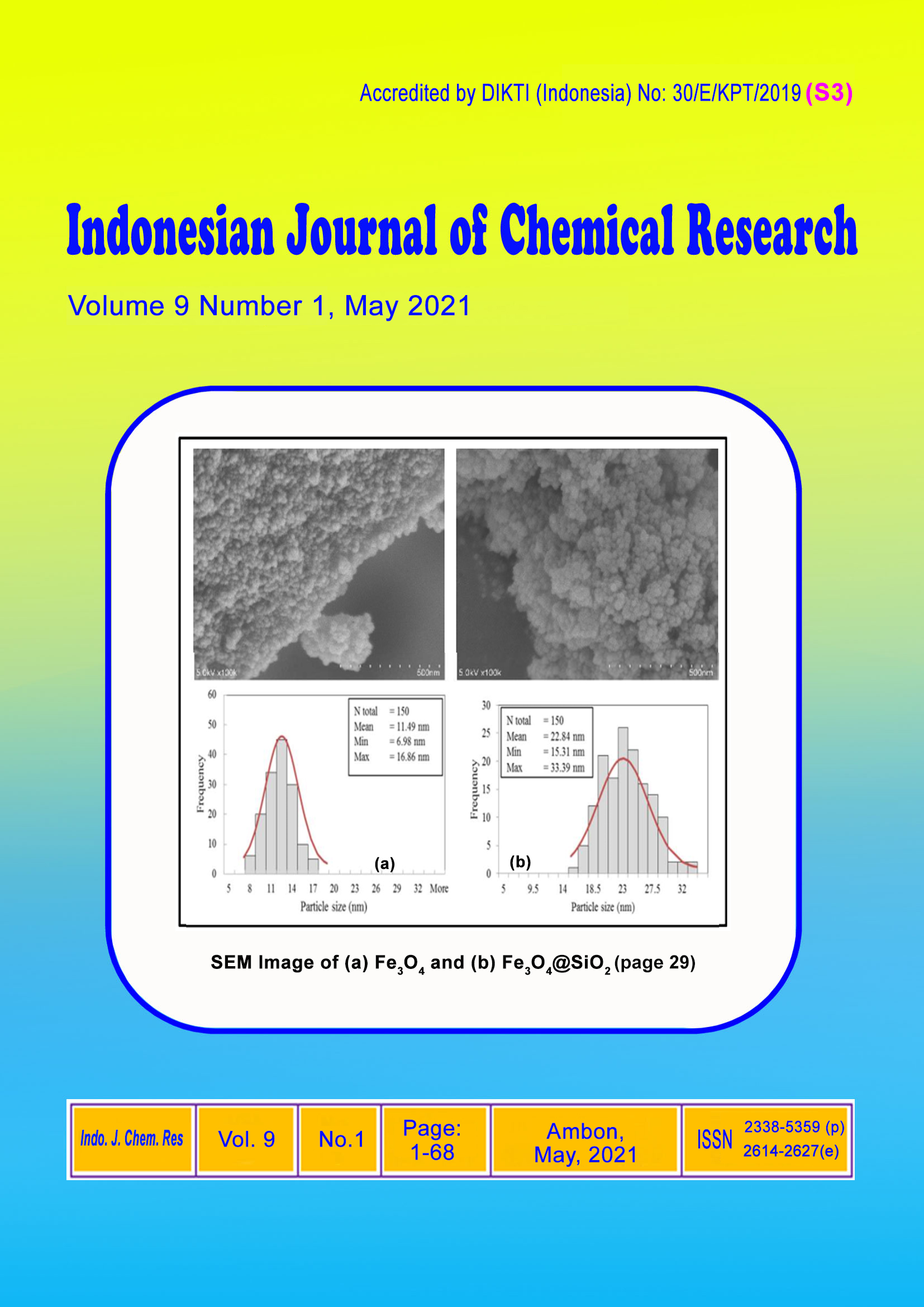Bioconcentration of Chrome (Cr) Metal in Three Types of Sponge (Callispongia sp., Xetospongsia sp. and Petrosia sp.) from Ambon Bay
Abstract
Research about bioconcentration of Chrome metal in three types of sponge (Callispongia sp., Xetospongia sp., and Petrosia sp.) from Ambon Bay. This research main is to know the most effective type to accumulate Cr metal in water. The Cr concentration measurement of water, sediment, and sponges at each location shows that metal concentration is 0.001-0.030 ppm in sediment higher than 0.001-0.003 ppm in water. Concentration based on sponges type Callispongia sp., Xetospongia sp., and Petrosia sp. are 0.001-0.262 mg/kg dry weight: 0.001-0.134 mg/kg dry weight, 0.001-0.330 mg/kg dry weight, respectively. The adsorption factor (AF) of Cr metal ranges from 0.000-0.028 ppm. Bioconcentration factor (BCF) based on sponges type Callispongia sp., Xetospongia sp., and Petrosia sp. are -0.011-0.261 mg/kg dry weight, -0.001-0.132 mg/kg dry weight, and -0.001-0.329 mg/kg weight dry, respectively. Sponges type that suitable used as Cr metal pollution monitoring media is Callispongia sp. and Xetospongia sp.
Downloads
Copyright (c) 2021 Shielda Natalia Joris

This work is licensed under a Creative Commons Attribution-NonCommercial-NoDerivatives 4.0 International License.
Authors who publish with this journal agree to the following terms:
- Copyright on any article is retained by the author(s).
- The author grants the journal, the right of first publication with the work simultaneously licensed under a Creative Commons Attribution License that allows others to share the work with an acknowledgment of the work’s authorship and initial publication in this journal.
- Authors are able to enter into separate, additional contractual arrangements for the non-exclusive distribution of the journal’s published version of the work (e.g., post it to an institutional repository or publish it in a book), with an acknowledgment of its initial publication in this journal.
- Authors are permitted and encouraged to post their work online (e.g., in institutional repositories or on their website) prior to and during the submission process, as it can lead to productive exchanges, as well as earlier and greater citation of published work.
- The article and any associated published material is distributed under the Creative Commons Attribution-NonCommercial-NoDerivatives 4.0 International License.






_copy1.png)










